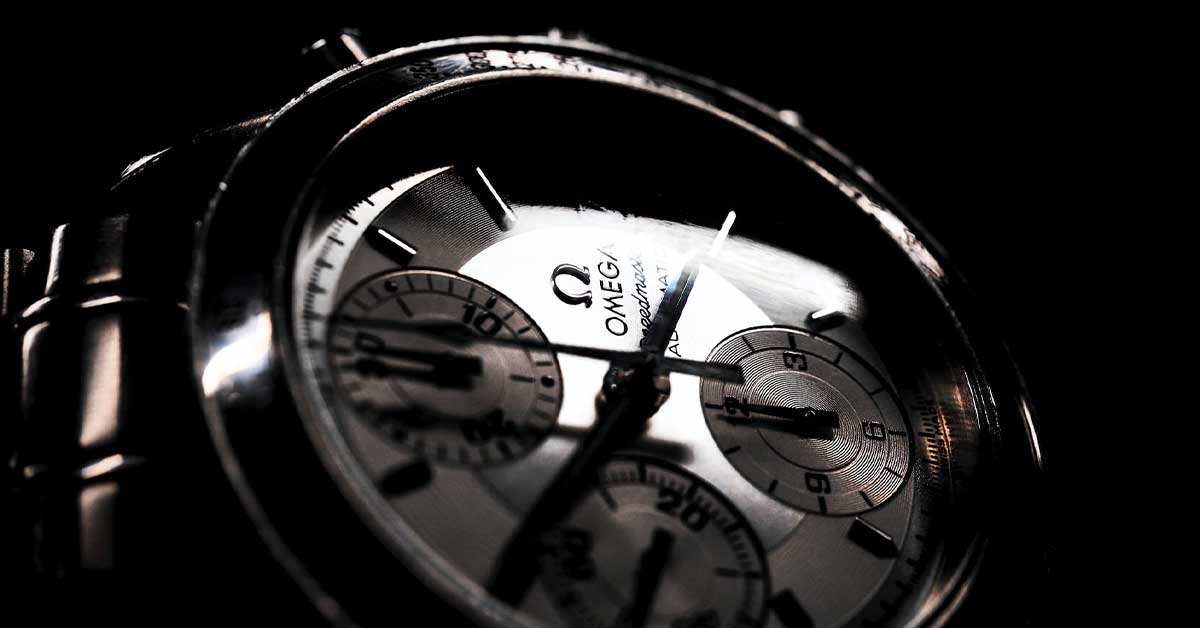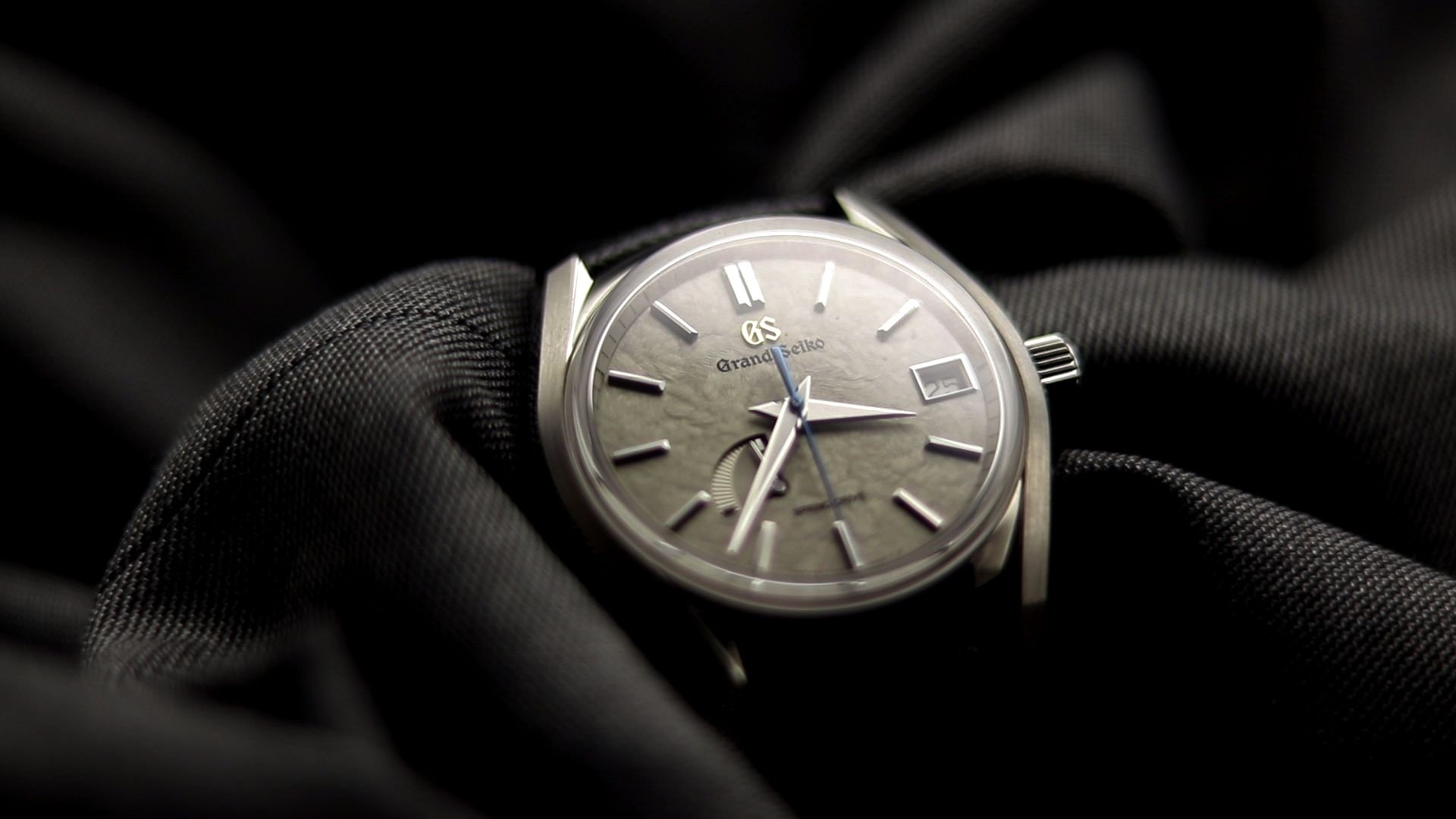The classier you dress, the better the accompanying timepiece should be. Omega is a reputable watchmaking brand with sophisticated designs and superior engineering processes. On the other hand, Tag Heuer is a premium timepiece maker with iconic products in the market.
Moreover, Hollywood stars adorn their wrists with products from these leading watchmakers. This massive publicity has added more context and content to the argument. To resolve this debate, we have analyzed both brands across several lines, including the commitment to precision, exquisite design, manufacturing procedures, and construction materials.
This article provides answers to your questions concerning their dependability, resistance, personal appeal, and construction materials.
Brand History – Omega vs. Tag Heuer
Omega
With a history dating back to 1848, Omega represents the crème de la crème in the timepiece industry. Their reputation got a flying start when they launched their innovative pocket watches. Before that, they specialized in transforming existing technology into a positive force within their products.
This posture cemented their partnership with the Olympics as the official timepiece for the 1930’s competition. Moreover, Omega leads the pace in weaving their products into the fabrics of history.
When Wally Schirra executed the Mercury Sigma 7 mission to outer space, he strapped the Omega Speedmaster to his wrist. Refusing to rest on its laurels, the company got the deal to ensure precise timekeeping for the moon mission.
As astronaut Buzz Aldrin landed on the moon in 1969, he had his Speedmaster with him. Moreover, the Omega Seamaster set the pace for diving timepieces when it debuted in 1948. Nine years later, it featured a nonstop unidirectional bezel with superb moisture resistance. In the popular James Bond movie, the Omega Seamaster 300 added an appeal to Pierce Brosnan’s alpha qualities.
Tag Heuer
Tag Heuer has a history covering two centuries. In 1860, Edouard Heuer started the Heuer Watch Company. From its modest beginnings, it has become a towering watchmaking brand in the 21st century. Although it started with a footing in the sports industry, it has evolved into a premium fashion product.
It took Heuer Watch Company over 50 years to secure its first partnership deal with the Olympics Committee. In the 1920s, it was the official time partner. Moreover, the Heuer Autavia found its way into the dashboards of racing vehicles.
Since then, its foothold in the sports racing sector has grown in leaps and bounds. When it released the Heuer Mikrograph, the world stood still because its 360,000 VPH raised the bar in increased accuracy. These accolades place the company among top timepiece brands with amazing partnerships, publicity, promotion, and products.
Exquisite Manufacturing Processes
Omega Liquid Metal
“Liquidmetal” is a special, nontoxic chemical synonymous with Omega watches. It forms the core of the bezel. The company pours Liquidmetal into its ceramic frame to create the Arabic numeric configurations on the final product.
Also, the minute markers are composed of this unique material. To adhere to strict quality principles, the bezels undergo a manual creation process. However, an automated manufacturing process is underway. Besides, Omega is experimenting with varied uses for its exclusive metal, including watchcases, hands, dials, and markers.
Omega Process Flow
The first step is to produce a ceramic platform that holds other components. Presently, Omega bezels feature blue, black, and white colors. Research to produce other fancy bezel colors is underway. Moreover, the materials for producing a ceramic bezel include a plastic plate, zirconium oxide, and a heating chamber.
The heating chamber runs at over 1000˚. This intense heat melts the plastic plate into a shiny ring full of zirconium oxide. At every stage of the process, there is an extreme attention to detail and quality.
Once the ceramic bezel is in form, workers carefully embed markers and numerals with a laser-engraving machine. Afterward, they place Liquidmetal over the bezel in a specialized pressure compartment.
Tag Heuer Timepiece Materials
The company boasts of a range of superior materials of construction to enhance appeal and ruggedness. Its avant-garde steel has zero-tolerance for corrosion and scratches. Regardless of location, you can rely on its robustness and precision.
This 316L stainless steel is a regular in the high-tech industry, but Tag Heuer adapted it for strength and longevity. Moreover, its carbon constituent exhibits superb resistance to toxic substances and impact. Besides its iridescent nature, it has a satin outlook that makes it irresistible. Also, titanium is a frequent construction material due to its lightness, hardness, and 100% shock absorbency.
Tag Heuer Manufacturing Process
The Computer Numerical Control (CNC) machine is central to the manufacture of Tag Heuer watches. The engineer sets a slab-like brass into the machine for milling, cutting, and shaping. During the operation, the tools create holes and tiny shapes inside the brass plate.
Meanwhile, it requires top-notch programming skills to design a perfect base for the watch. This additional commitment in time and skill leads to an uncommon accuracy level. Also, the “bridge” undergoes similar design and manufacturing procedures.
The next step is coating the surface with nickel. Afterward, an advanced machine fixes rubies into the bezel to hold lubricant. Finally, they attach the crown, and the watch comes alive.
Higher Timekeeping Accuracy – Omega vs. Tag Heuer
As the analysis progresses, it is imperative to consider the leading reason for owning a watch – its commitment to precision. For years, the Swiss Chronometer Testing Institute certified watches with its COSC badge. Each watch underwent a rigorous examination to ascertain its ruggedness.
Passing the COSC tests remains an incredible deal because it increases brand perception and popularity. For 15 days, the examiners uncase a watch and test it in five locations.
Moreover, these five locations are conditioned to three temperature levels. After this, examiners remove the original hands and place a different one.
Also, they remove the automated winding device and monitor the movements with cameras. Not all watches pass the test; thus, it represents a mark of honor for those who do.
Omega’s METAS Certification
Innovative companies transcend winning the game to creating the rules. In 2015, Omega created the Swiss Federal Institute of Metrology (aka METAS) to elevate the watch certification process. The brand posited its commitment to producing the best timepieces possible.
Unlike the COSC tests, a watch undergoes eight intense tests in ten days. Besides, these tests simulate real situations. To secure the METAS badge, the watch must remain intact when exposed to severe magnetic fields. Interestingly, Omega represents the only winner of the test in recent times.
Resistance to Magnetic Interference
According to research, magnetic interference is the main source of incorrect readings in mechanical timepieces. Several watches lose their accuracy while passing near magnetic fields of about 15,000 gausses.
However, Omega created a specialized silicon formula to insulate their timekeeping devices. Regardless of the intensity of electromagnetic frequencies, their timepieces maintain accurate readings. This feat lends credence to their METAS rating. On the other hand, Tag Heuer lacks the technical sophistication of Omega concerning precision.
Luxury Design and Appeal – Omega vs. Tag Heuer
Although some people might be happy with having a basic watch on their hands, others desire the feeling of confidence and superiority that a luxury timepiece provides. If you are paying a premium price, then you should get an exquisite feeling.
Both brands have a certain degree of water resistance. Moreover, they have dedicated diving timepieces that adorn the wrists of deep-sea divers. Some product lines showcase time, date, and day of the week. Besides, others have tachometers to get an instantaneous report of your velocity.
Tag Heuer Smart Watches
Recently, the company has rolled out its connected timepiece line. If you are the adventurous, smart type, there is a Tag Heuer Connected for you. With an OLED display that measures 1.39 inches, you can see everything on the dial easily. It has a sapphire base, which adds to its exquisite appeal.
To prevent rapid battery rundown, it can alternate between active and sleeping modes. Some of the incorporated sensors include a heart rate monitor, accelerometer, GPS device, compass, and gyroscope. By outsourcing its processors to Qualcomm, it guarantees a sufficient memory of 1GB RAM and 8GB ROM. It is responsive and reliable.
Omega Avant-garde Appearance
Omega product lines have an elegant finishing absent in their Tag Heuer counterparts. It features a simple dial with clear numerals and markings. Moreover, its Seamaster Professional has a popular wavy pattern, representative of its natural habitat.
The hands have a unique hollow sword design, adding an air of exclusiveness. The markers are bold and easily visible. Besides, its bracelet style makes it more attractive. It holds a considerable amount of its value over time and can stay for years without damage.
Concluding Thoughts on Omega vs. Tag Heuer
After careful analysis and testing, the Omega timepiece brands get the gold, ahead of Tag Heuer. Although both watchmakers have a robust history and an impressive present, Omega merges iconic designs with rare polishing techniques. Notwithstanding, its sleek dials, stylish hands, and higher accuracy make it more befitting.





